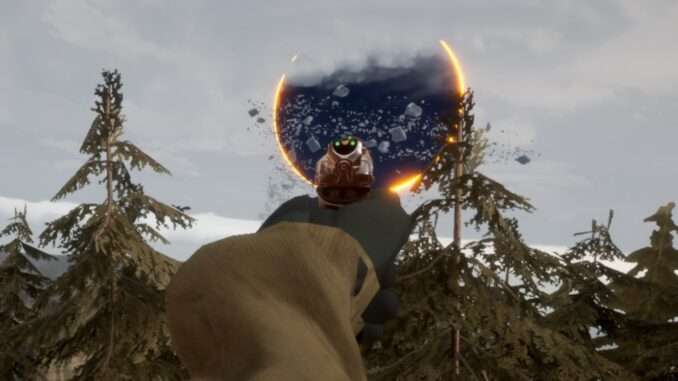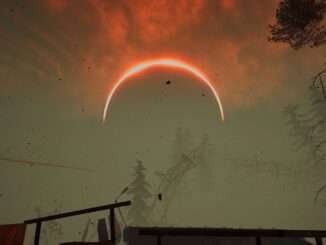
Table of Contents
Graphics Settings Guide
This guide consists of brief descriptions of each graphical setting, as well as our tips / suggestions / warnings for tweaking them.
We hope this guide sheds some light on the functionality of VR settings as well as helps you achieve a more enjoyable in-game experience.
Overall Quality
When you launch the game for the first time presets are chosen based on your GPU. Resolution scaling is now a part of the preset and you can always customize it to your liking.
Resolution
A percentage of the native resolution of the headset. One of the most decisive options for Performance and visual clarity. If it’s over 100% (which it should be or its too blurry for most headsets) it uses more info for the final output. Basically you render a bigger image and shrink it down to make it sharper and reduce sub pixel artifacts or aliasing.
- There are a lot of places that increase the resolution besides the game. Both SteamVR and Virtual Desktop have those settings. We suggest adjusting those to 100% and altering the scale in-game, because performance is very much game specific.
- Different headsets have different native resolutions. E.g. on the same specced PC and resolution scale an Index would have better fps than a MQ2. Visuals of course would be different too.
- Going too crazy with it will result in huge render targets for the game that will drop the fps to unplayable or even prevent the game from working (due to not being able to fit your video memory).
Upscale Method / AMD FSR, OFF
AMD FSR reduces the resolution of the game to render depending on the preset and then upscales it. Since it works on the final stage of the render it has a low base cost but has significant visual impact. Enabling FSR also enables the AMD RCAS sharpening post process filter.
- We suggest using FSR only on low end systems otherwise struggling to produce an acceptable scale of 120%
Upscale Sharpen
Post effect sharpness filter. A high amount can produce a strong outline-like effect. It’s mostly up to personal preference whether you feel it improves clarity or worsens the image.
- It’s much more noticeable on lower resolutions.
- It’s pretty demanding, so if you run high resolutions or don’t like the effect, set it to 0 to disable and save some power for other things.
Anti-Aliasing: TAA or MSAA
TAA- Temporal Anti Aliasing
Uses previous frames and lots of math to improve visuals. It can help not only with geometry aliasing like thin wires but also with shading artifacts. For example if there is a bright light source reflected somewhere, it can reduce potential flickering (so called “fireflies”). The downside is it produces a more blurry image that must be countered by increasing the resolution.
MSAA – Multi Sample Anti Aliasing
Applies antialiasing to geometry edges only. As a result provides a sharper image, but is much more memory and bandwidth dependent and doesn’t provide any temporal or shading stabilization. This can result in more things shimmering.
- If you have a high enough resolution, turning on MSAA can significantly tank your fps.
- Generally 110% MSAA is roughly visually comparable to 150% TAA.
Fixed Foveated Rendering
An optimization technique that reduces the amount of work the GPU has to do on the sides of the screen. Taking advantage of the fact players in VR mostly look at the center area (due to the lens’ design and etc). Presets regulate the size and shape of the center zone that is not affected by the reduction. The wider the zone, the less noticeable it is and less performance is gained.
- Balanced preset is hardly noticeable while providing up to 30% performance increase depending on Variable Rate shading settings.
- Even though it’s not that noticeable inside the headset, it can be very noticeable on the monitor, so we suggest disabling it if you are streaming or recording your playthrough.
Variable Rate Shading
A quality setting for Fixed Foveated Rendering. Simplifies shading of objects and dynamic shadows in the peripheral regions. Can provide considerable GPU performance benefits but also noticeable visual artifacts on max performance settings.
- Does nothing if Fixed Foveated Rendering is OFF.
Screen Space Reflections
A post process effect that reuses parts of the image to improve or add otherwise missing reflections. Not very easy on the GPU and has visual artifacts. If something is not present on screen currently, then it can’t be reflected, causing a noticeable transition in reflection when moving around or turning your head.
- Mostly comes down to personal preference. For us it improves the visuals much more than distracts.
- Has much worse visual quality when MSAA is used.
View Distance
Draw distance for the game’s scenery.
- Can affect CPU as well as GPU load.
Shadow Quality
High and Medium settings use dynamic shadows for close objects that drastically improve the visuals – sharper shadows are cast over player and dynamic objects. Low settings disable the dynamic component and leave only the cheapest pre-baked lighting.
- Can have a considerable impact on CPU load.
Foliage Density
Amount of grass and non-collidable shrubs.
- Can have an impact on CPU load.
Effects
Controls some of the more advanced effects like refraction/distortion seen on the anomalies.
- GPU load when encountering anomalies and other visual effects.
Geometry
Mainly affects the LOD distances. The higher the quality, the farther away most detailed LODs are used. Can significantly affect visuals and amount of triangles on screen especially when combined with dynamic shadows.
- High GPU load.
Additional Settings Suggestions
- Make sure you don’t have any resolution multipliers outside of your game.
- Enable some sort of GPU performance overlay, like the one built in SteamVR.
- Try going through the presets. If it’s not performing even on the lowest, it’s either because your PC is well under the minimum specs for your headset, or there is some sort of hardware/driver/OS issue. Please send us a bug report if this happens.
- To customize the presets, try reaching the comfortable resolution of 140-150% by enabling and tweaking the Fixed Foveated Rendering and Variable rate shading. If it’s underperforming, set the Shadows to Low. If it’s still underperforming enable AMD FSR.




Be the first to comment